Menus
- First test of the new K
- landing gear
- Brakes and engine
- Powertrain and gearshift
- Technical data BMW K 1300 R
- K 1300 S and K 1300 GT – The other K models
- Plus minus
- What’s new?
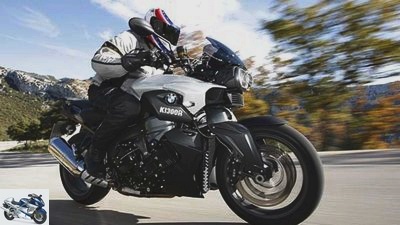
Artist
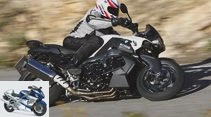

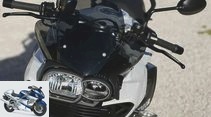
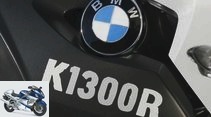
20th photos

Artist
1/20
The electronically adjustable ESA chassis, which now bears the suffix II, has also been modified. In addition to the familiar adjustment of the damping and spring base, there is now also a variation in the spring rate at the rear..

Artist
2/20
The semi-integral anti-lock braking system remained unchanged, but can now be switched off for trips to the racetrack. The same applies to the ASC anti-slip regulation that intervenes in dangerous situations. Wheelie fans will be happy.

Artist
3/20
Despite a weight of 252 kilograms, the K 1300 R has no problem in accelerating from 0 to 100 km / h in 2.9 seconds, from 0 to 200 km / h in just 7.9 seconds.
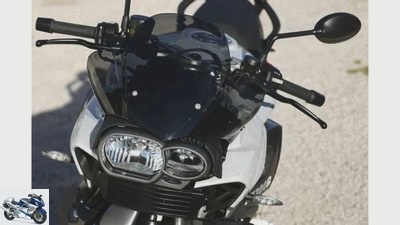
Artist
4/20
One can argue about the look of the headlights and the front. The recognition value is definitely high.
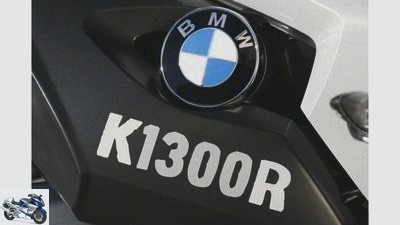
Artist
5/20
The measures taken on the engine increase power and torque over the entire speed range. The K-motor is now capable of producing 173 hp and a maximum torque of 140 Newton meters.
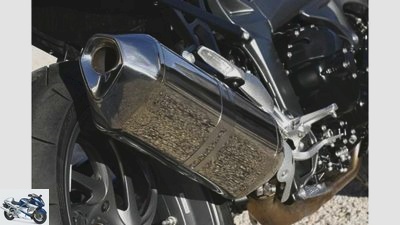
Artist
6/20
Shortened silencer with new exhaust flap control.
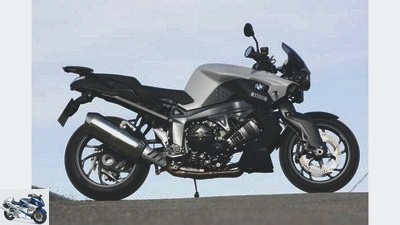
Artist
7/20
Except for a few slight retouches that make the appearance of the K a little more crisp and sporty, there is little noticeable of the change in the K from the outside
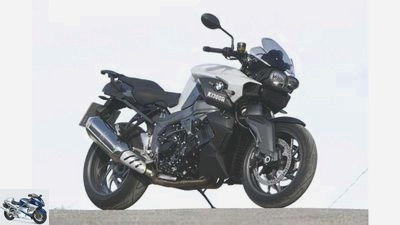
Artist
8/20
The steering geometry of the K 1300 R has been optimized with a longer wheelbase and flat wheel carrier.

Artist
9/20
Improved cardan drive that eliminates the annoying rattle of the rear-wheel drive of the previous model. For this purpose, the technicians have used a lot of damping and friction components under the cardan casing, which is largely successful.
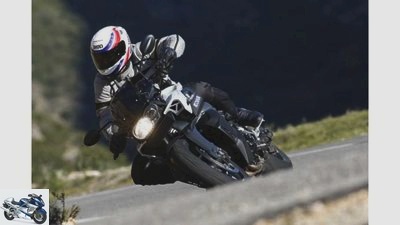
Artist
10/20
The Conti Sport Attack tires cope well with changing conditions such as cold or wet conditions. During the test, the K was equipped with a 190/55 rear tire on a 6.00 inch rim, which had a positive effect on handling.
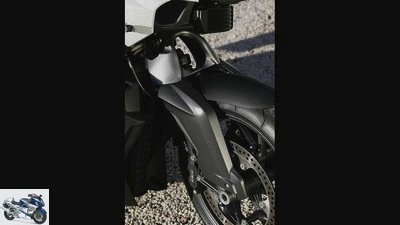
Artist
11/20
The Duolever has been revised compared to the previous model. The lower trailing arm is now made of aluminum and the basic set-up of the K chassis is tighter in terms of suspension and damping.
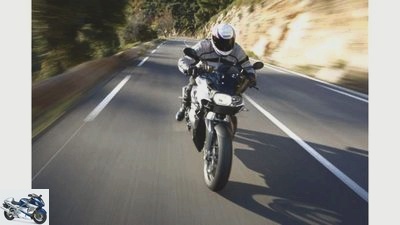
Artist
12/20
On the brakes, the K is still a force! None of them can be braked so brutally because the rear wheel remains on the ground and the partially integral ABS regulates it sensitively.
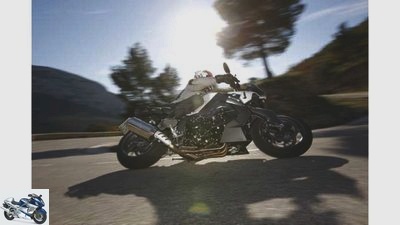
Artist
13/20
However, the feedback from the brake is still indifferent. On the test machine, there was also the fact that with increasing pad wear, the free travel on the brake lever increased and the pressure point began to move significantly.
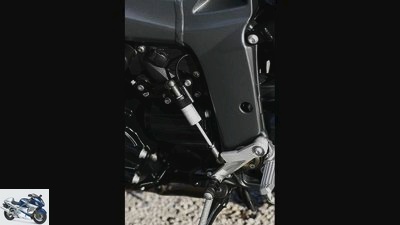
Artist
14/20
An optional shift assistant for 360 euros allows gear changes to go smoothly. When upshifting, it briefly interrupts the ignition and injection so that you can change gears without having to take off the gas. Downshifting still works conventionally.
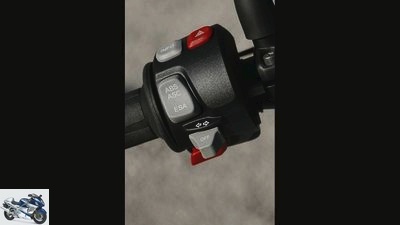
Artist
15/20
Due to the increasing space problem for switches and buttons, BMW has one view and has installed a classic turn signal switch instead of the usual three. The switch for the optionally available safety package consisting of ABS, ASC and RDC for 1400 euros is located above the turn signal switch.

Artist
16/20
The driving stability and the feedback improve thanks to the evolution stage, which works more smoothly than the old ESA system. However, the peculiarities of the BMW chassis to decouple the driver from the road were largely retained.
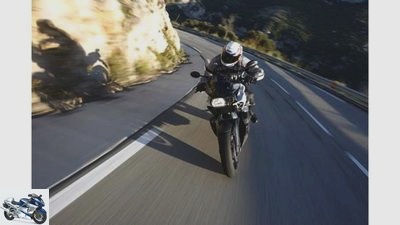
Artist
17/20
In the basic version you have to put 13,750 euros on the table. The test machine with numerous extras, however, hits a hole of 16,210 euros in the cash register. Although you certainly didn’t want to miss out on many extras.

Artist
18/20
Pictures from the first test of the new BMW K 1300 R..
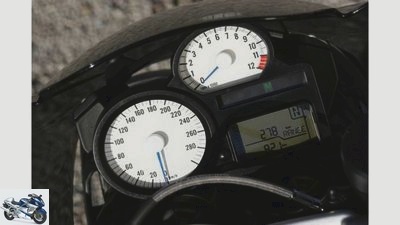
Artist
19/20
Familiar arrangement in the new design. The on-board computer, which makes sense, costs extra.
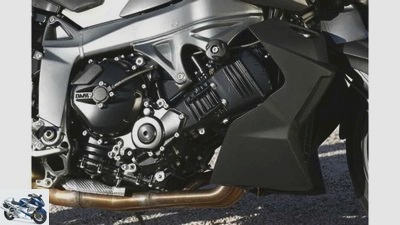
Artist
20/20
Many screws still adorn the engine, which has been enlarged to 1293 cm³. The combustion chambers and the timing have also been changed.
Test BMW K 1300 R
First test of the new K
Sensational news from Munich: The ominous BMW indicator circuit disappears. In the shadow of this surprising change of heart, there are plenty of other innovations on the new K 1300 R that set standards.
M.ith claws and teeth, BMW marketing defended for decades the white and blue single-handed approach when it comes to activating the indicators, in which a total of three switches are neatly distributed over the handlebars. That was logical, that was easy and better, was communicated constantly.
But oops: Now the Munich-based company is conjuring up a conventional turn signal switch on the left handlebar fitting. An indication of insight, an act of grace? Have you bowed to the pressure of the road? Not at all, according to Markus Poschner, series manager of the K models: "The technicians wanted the controls to be streamlined for future functions." That sounds really logical.
BMW has an understanding: The conventional turn signal switch is available now
Even today, tourists quickly lose track of the hodgepodge of switches and buttons with a fully equipped K 1200 GT. So the good news: After the current revision of the K series, flashing can now be done in a simple and classic way. Even better: this also applies to other series as part of model changes.
A closer look at the left end of the handlebar shows what equipment the test machine of the type K 1300 R has to offer. Above the conventional turn signal switch, your thumb can immediately find the slider that is responsible for ABS, ASC and ESA. The partially integral anti-lock braking system, which is subject to a surcharge on the R in contrast to the S, remained unchanged, but can now be switched off if necessary, e.g. for trips to the racetrack. Nothing has technically changed in the recommended ASC anti-slip control, which only comes into action in dangerous situations. Wheelie fans will appreciate that this safety feature can also be overridden.
landing gear
On the other hand, the electronically adjustable ESA chassis, which now bears the suffix II and, in addition to the familiar setting of the damping and spring base on both wheel suspensions and the rear spring base, also allows a variation of the rear spring rate, has undergone more extensive modifications. Using a simple trick that is reminiscent of the springs connected in series on the Yamaha FJR 1300. In the case of the BMW, a conventional steel coil spring is connected in series with an elastomer spring, which can be bridged, i.e. blocked, by a servomotor. Either both springs spring, which corresponds to a softer setting, or only the steel spring, which makes the suspension harder.
Apart from that, the technicians made the basic set-up of the K-chassis tighter in terms of suspension and damping. This benefits the driving stability. Overall, the new evolutionary stage of the electronic chassis has a somewhat smoother response than the ESA, which has already worked very well. Only with rough bumps does the suspension start to trample. The feedback is also better, even if the typical peculiarities of the BMW chassis, the decoupling of driver and road, have largely been retained.
Optimized steering geometry with a longer wheelbase and flat wheel carrier
In a lean position, however, the K 1300 follows steering impulses more directly and spontaneously, which is due not least to changes in the steering geometry. In this context, it should be noted that the Conti Sport Attack tires behave extremely cooperatively and impress with their good grip, especially in changing conditions such as cold or wet conditions. The test machine was equipped with the optional 190 rear tire on a 6.00 inch rim, which now has an aspect ratio of 55 instead of 50, which has a positive effect on handling. The initially wobbly driving behavior in the speed range between 50 and 80 km / h in the 1200s is no longer an issue. The elongated, 252 kilo heavy 1300 will not be a handling miracle, but it hides the pounds really well. Only cold seems to make your limbs stiff, in shady morning temperatures just above freezing point the steering works a bit clammy.
Brakes and engine
It’s inside: real 1.3 liter displacement thanks to more stroke and larger bore
As is well known, the K sets true standards on the brakes. Hardly any motorcycle can be braked so brutally and easily as the K models. No rear wheel rises, the partially integral ABS takes care of the sensitive regulation along the slip limit in a convincing way. Nevertheless, there are still a few points of criticism: With increasing pad wear, the free travel of the lever on the test machine increased. The brake was then released "inflate", the shifting pressure point doesn’t exactly improve the generally somewhat indifferent feedback.
The decisive progress took place with the current model change in the center of the action. The already powerful 1200 has now been given a tenth of a liter more displacement by increasing the stroke by 5.3 millimeters and the bore by one millimeter. The engineers have done their homework, as the test bench confirms: The displacement bonus, in conjunction with other measures in the area of the cylinder head, gives the 1300 engine a significant increase in power and torque over the entire speed range. The fact that more displacement brings more power from below is of course hardly surprising. But the larger engine adds a few more briquettes, especially in the middle range, and clearly outperforms its predecessor at the top. The maximum speed remains unchanged at just under 11,000 rpm.
Proven arrangement, new design: Unfortunately, the useful on-board computer costs extra
One would like to think that such a test bench performance comes across as violent in real life as the discrepancy between the curves suggests (see diagram on the right). Which is only partially true. Because at the same time the aggressive throttle response, criticized especially by the tourist K 1200 GT customers ?? Keyword kangaroo effect? be defused. With success, the machine no longer jumps forward so hard at smaller angles of rotation on the throttle, so the first impression is tamer. The 1300 also runs smoother and smoother when pushing. Only at the apex of the bend, at the transition from pushing to load operation, would you sometimes want a more spontaneous throttle response.
If you wind the cable a little further, however, it is by no means hidden what power the new engine develops. A kick that the K pilot can savor almost unrestrainedly even in lower gears. The front wheel literally sticks to the ground because of the long wheelbase and the low center of gravity ?? at least from gear two. And in an emergency, the slip control warns you to moderate if you use too much in an inclined position. If you need numbers, you should take a look at the measured values: an impressive 2.9 seconds at 100 km / h and a rapid 7.9 at 200. These are absolute best values. Regardless of whether it is accelerating or decelerating, a K 1300 R is hard to crack.
Powertrain and gearshift
Cardan drive with two-stage cardan shaft and shock absorber
Progress can also be reported from the powertrain. Here, eager technicians have really dogged themselves and designed an elaborate cardan shaft that has certainly given the red pen department some headaches. The usual cardan casing conceals a lot of damping and rubbing components that are supposed to finally eliminate the previously annoying clatter from the rear-wheel drive.
Which also largely succeeds. The well-known driving conditions in coasting mode, in which the drive train rocked into hard torsional vibrations with a clattering background noise, can no longer be provoked. Only now and then does a slight clack report that this motorcycle is still being propelled by a cardan. The technicians also worked on improving the circuit. The gears still don’t slip in by themselves, but shortened shift travel and lower actuation forces make the shift work much more pleasant.
It has to be fun: with the shift assistant (optional), gear changes are smooth
Step dancing through the aisles with the optional shift assistant is really awesome. It briefly interrupts the ignition and injection when shifting up, so that you can push in the gears under load without twitching the throttle. Although pressing is actually the wrong expression, it works extremely smoothly. And works quite well even in the partial load range and at lower speeds. An indispensable feature for sporty drivers. The clutch should of course still be used to downshift.
Outwardly, there is not much to be seen of the change in the R. Slight retouches on the plastic make the appearance a little crisper and sportier. Despite all the technical modifications, the K 1300 R is not a miracle machine. A motorcycle that sets standards, definitely.
Technical data BMW K 1300 R
engine
Water-cooled four-cylinder four-stroke in-line engine, two balance shafts, two overhead, gear / chain-driven camshafts, four valves, rocker arms, dry sump lubrication, injection, Ø 46 mm, regulated catalytic converter, alternator 580 W, battery 12 V / 14 Ah, hydraulically operated multiple discs – Oil bath clutch, six-speed gearbox, cardan.
Bore x stroke 80.0 x 64.3 mm
Cubic capacity 1293 cm³
Compression ratio 13.0: 1
Rated output 127.0 kW (173 hp) at 9250 rpm
Max. Torque 140 Nm at 8250 rpm
landing gear
Bridge frame made of aluminum, front double trailing arm, central spring strut, adjustable rebound damping, two-joint single-sided swing arm made of aluminum, central spring strut with lever system, adjustable spring base and rebound damping (with ESA: adjustable spring rate, spring base, rebound and compression damping), steering damper, double disc brake, front, Ø 320 mm Four-piston fixed calipers, rear disc brake, Ø 265 mm, double-piston floating caliper.
Cast aluminum wheels 3.50 x 17; 6.00 x 17
Tires 120/70 ZR 17; 180/55 ZR 17
Tires in the Continental Sport Attack test
Dimensions + weights
Wheelbase 1585 mm, steering head angle 60.4 degrees, caster 104 mm, spring travel f / r 115/135 mm, seat height * 830 mm, weight with a full tank * 252 kg, payload * 208 kg, tank capacity / reserve 19.0 / 4.0 liters.
Warranty two years
Service intervals every 10000 km
Base price 13750 euros
Price test motorcycle ** 16,210 euros
Additional costs 206 euros
Performance * BMW K 1300 R (K 1200 R)
Top speed 270 (262) km / h
acceleration
0 100 km / h 2.9 (3.2) sec
0 ?? 140 km / h 4.3 (4.6) sec
0 200 km / h 7.9 (8.7) sec
Draft
60 ?? 100 km / h 3.2 (3.4) sec
100 ?? 140 km / h 3.2 (3.2) sec
140 180 km / h 3.4 (3.7) sec
Speedometer deviation
Effective (display 50/100) 46/97 (48/97) km / h
consumption
Country road 5.3 (5.5) l / 100 km
Theor. Range of the highway 358 (345) km
Fuel type Super Plus
* MOTORCYCLE measurements; ** incl. shift assistant (360 euros), safety package (1400 euros), consisting of RDC, ABS, ASC (both can be switched off), and equipment package (700 euros) consisting of sports bikes with 190/55 ZR 17, heated grips, on-board computer, windshield; 1 Manufacturer information; Diagram: power on the crankshaft; Measurements on Dynojet chassis dynamometer 150, corrected according to 95/1 / EG, maximum possible deviation ± 5%
K 1300 S and K 1300 GT – The other K models
BMW
K 1300 S: refreshed outfit, lots of new technology
The K 1300 S and GT have also been revised. Engine modifications and chassis changes are essentially the same for all three variants. The S, with its narrower cladding, now has a nominal 175 hp. The double top test in MOTORRAD 2/2009 shows how the model changes affect the S compared to its predecessor.
The optically only slightly retouched GT now benefits from the increase in displacement with 160 instead of the previous 152 hp. More important for the tourer, however, is the increased torque in the lower range and the less aggressive engine setup. Incidentally, the GT keeps the long silencer without flap control. The shift assistant does not exist for the GT, but there is the electronic chassis ESA II.
Plus minus
Plus:
More power, more pressure
Responsiveness smoother
Extremely short braking distances
Minus:
Fully equipped quite expensive
Brake with little feedback
Load change somewhat delayed
What’s new?
– Displacement increased from 1157 to 1293 cm3
– Changed combustion chambers and timing
– Shorter silencer with flap control
– Cardan drive with two-stage cardan shaft and shock absorber
– Optimized steering geometry with a longer wheelbase and flat wheel carrier
– Duolever with lower wishbones made of aluminum instead of steel
– Tighter basic tuning of the spring elements
– Optional ESA II with enlarged effective area
– Improved switching kinematics
– Shift assistant available as an extra
– New handlebar fittings with conventional indicator actuation
– Vibration-decoupled suspension of the handlebar ends
– Optical revision
– Wider comfort pillion seat available
Related articles
-
KTM 690 Duke put to the test – the cornering machine from KTM
20 pictures 1/20 Such deposits are no problem for the single. 2/20 Also available in black – The KTM 690 Duke ….
-
Double top test BMW K 1200 S-1300 S
fact 12 pictures BMW 1/12 driving pleasure in BMW style. BMW 2/12 eye-catcher: the cladding in lava orange metallic. BMW 3/12 With an engine power of 175 …
-
Kunstle 13 Bilder Kunstle 1/13 The on-board tool kit of the BMW almost ties in with old traditions. With the help of the nine-piece set you can …
-
Gagolov Top-Test MV Agusta F4 S The art of the round It is in a prominent position in a world-famous art exhibition. And she provides her own …
-
Comparison test of the sports tourers from BMW and Honda
fact 12 pictures fact 1/12 Top brakes: radially screwed six-piston stoppers, ABS and integral actuation. fact 2/12 Builds compact and very narrow: the …
-
Comparative test of athletes: BMW S 1000 RR against Honda Fireblade
13 Bilder Kunstle 1/13 The on-board tool kit of the BMW almost ties in with old traditions. With the help of the nine-piece set you can …
-
Comparison test: fun on the country road
Jahn comparison test: fun on the country road Street sweepers Winding country roads are the culmination of every motorcycle tour. But how far does the fun hang …
-
Comparative test of mid-range naked bikes
Artistic comparison test middle class naked bikes Honda Hornet 600, BMW F 800R and Yamaha XJ6 In the middle class the post is really going on. With…
-
Comparative test of Italian athletes
Artist comparison test Italo-Sportler, Aprilia RSV 1000 R Factory, Benelli Tornado Tre 1130, Ducati 999 S, MV Agusta F4 1000 R Squadra Azzurra The …
-
Top test Benelli TreK 1130 Amazon
Art 85 pictures Cheadle 1/85 The big photo show of Gary’s tour from Spain to Dakar offers great landscape shots … Cheadle 2/85 The chain …